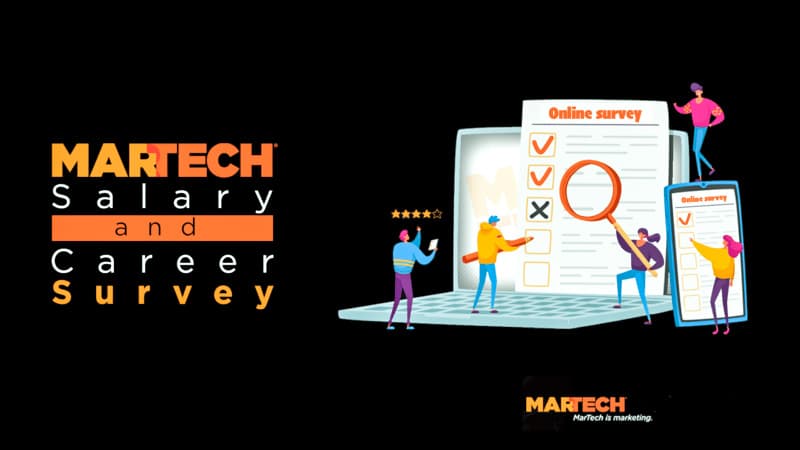In their “Martech for 2024” report, Scott Brinker and Frans Riemersma compared AI’s adoption to a compressed version of Gartner’s Hype Cycle. Certainly, the pace of change in martech now is unprecedented.
We see this in the rate at which martech vendors released beta features to users over the past year. Many of those features were infusions of AI into existing applications. We are clearly in the midst of an “AI arms race,” triggered by the release of ChatGPT just over a year ago.
In my previous three pieces for MarTech, I focused on the overall trends, data quality and content/campaign governance. Each of those areas is being impacted by the incredible pace of change brought about by AI.
Dig deeper: 3 ways email marketers should actually use AI
This piece focuses on the integration capabilities in customer relationship management (CRM) and marketing automation platforms (MAPs). These integrations typically involve data management capabilities.
To explore this, we’ll walk through a hands-on test with Zapier, one of the leading workflow platforms. As we walk through the test, you’ll see how Zapier is infusing AI capabilities in its beta releases.
Hands-on test: Integrating online shopper data
My hands-on test was conducted with the following fictional use case:
The shopping system of record for a home-grown business is its proprietary, legacy ecommerce tool. To accommodate growth, the business plans to deploy a CRM/MAP for customer marketing and customer service outreach.
In this scenario, the legacy system only outputs data in the .csv format through a conversion spreadsheet (in Google Sheets) because it was previously determined that building a full database interface would tax the available resources.
Next, I set up a sample set of consumer ecommerce shopping data. The consumer profiles were generated by ChatGPT.

Take Martech’s 2024 Salary and Career Survey
From AI to layoffs, it’s been quite a year. We’d like to know how it’s been for you. Please take this short survey so we can have your input on the state of martech salaries and careers.
‘Point-and-click’ gives way to ‘describe-and-done’
Zapier is a popular platform often used for integrations like the one I’m simulating here. The beta release of Zapier’s Zap builder uses prompts and AI to guide users through the process of building an integration.
Here is the starting prompt:
My initial, generic prompt helped the system focus on “HubSpot” as a keyword. However, the system helpfully informed me it needed more information to create a complete workflow.
My revised prompt included the Google Sheets language:
While this is still a relatively simple example, the Zap results signaled a more powerful future. The implications of using natural-language AI prompts to build full technical interfaces are far-reaching. This extends beyond “no-code.” It’s a game changer for basic users of technology.
This is an example of a broader trend addressed by HubSpot co-founder Dharmesh Shah when HubSpot released its ChatSpot AI capabilities in March 2023. He said we’re shifting from “point-and-click to describe-and-done” in a more natural, declarative approach. In other words, AI is helping software vendors create more human-friendly interfaces.
AI structures the unformatted and unstructured data
In the real world, it’s entirely possible the legacy data in our test would be delivered in unformatted and unstructured formats. Therefore, my next step was to consider a data formatting Zap.
Once again, I created a prompt, this time to help me format the Average Purchase Value as U.S. dollars.
Here’s a similar scenario. Let’s assume that the legacy system stored customer service comments with lots of unnecessary formatting (e.g., various uncommon delimiters). This would typically require coding and or formatting to extract value from the data.
I explored Zapier’s capability to produce that code for me. The following was the resulting Zap, created with Zapier’s AI-assisted Python coding capability.
Conclusions
I used natural language prompts and Zapier’s AI capabilities to create an integration between a legacy, proprietary ecommerce system, Google Sheets and HubSpot. Then I created Python code to format data fields to extract value from unstructured data.
What did I learn from this test? What will I take into 2024?
- Major platform and existing feature utilization will increase with AI-assisted help. As AI gets further infused into martech platforms, this assistance will help us explore existing features and functionality that we didn’t previously know or didn’t use fully. This, in turn, will help us rationalize our martech stacks.
- The early edge goes to the major platforms. AI-prompted help will tell us how to use existing features, potentially limiting the need to seek out point solutions. Larger platforms with well-established online repositories and communities will have an advantage, as evidenced by HubSpot’s deployment of prompts built on its existing Learning Academy content.
- AI-prompted no-code will be driven by MAP/CRM platforms that we trust. A significant portion of the martech landscape consists of third-party point solutions that took on the coding for us. But AI- prompted approaches may make us more amenable to leveraging platform-generated code sets that are effectively mini-applications, built-in platforms like Zapier, since we already trusted them to be our no-code interfaces. This was also captured by Brinker and Riemersma in their recent report on the spectrum of composability.
- AI-based workflows and integrations will extend to more users. Infusing AI directly into MAP/CRM platforms will allow less technical users to create workflows and integrations, like the ones I created in my testing. Recent betas of AI-assisted capabilities demonstrate major platforms are moving quickly. HubSpot announced its intention to roll out AI agents early in 2024.
When we combine my experience testing Zapier’s beta workflow capabilities, and the expected pace of change, 2024 promises to be an even more disruptive year for MAP workflow and integration capabilities.
Get MarTech! Daily. Free. In your inbox.
See terms.
The post How AI’s ‘describe and done’ can revolutionize your work appeared first on MarTech.
